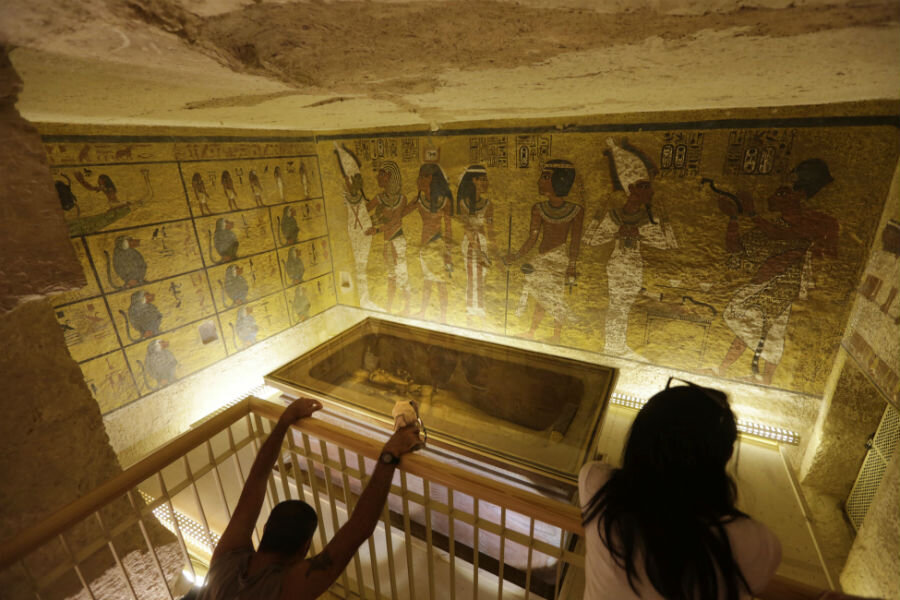Who else is buried in King Tut's tomb? Perhaps a queen, says one Egyptologist.
The mystery of who else may be buried in King Tutankhamun's tomb edged closer to a resolution over the weekend.
Ancient Egypt’s boy-king, commonly referred to as King Tut, made international headlines earlier this month when scans of his final resting place using infrared thermography detected temperature differences along one of the tomb’s walls.
"We said earlier there was a 60 percent chance there is something behind the walls. But now after the initial reading of the scans, we are saying now it's 90 percent likely there is something behind the walls," Egyptian Antiquities Minister Mamdouh al-Damaty told a news conference Saturday.
British Egyptologist Nicholas Reeves, who is leading the investigation, said last month he believed Tutankhamun's mausoleum was originally occupied by Nefertiti, the king’s stepmother, and whose final burial site remains a mystery. Dr. Reeves speculates she has been undisturbed, behind what he believes is a partition wall, since the 14th century BC.
Married to Tutankhamun's father, Akhenaten, Nefertiti was a looming political and religious figure of her time, and some believe she may have outlived her husband and briefly reigned over Egypt. The discovery of her tomb would be a boon to Egyptologists, and to the ailing Egyptian tourism industry.
From the news conference with Dr. Damaty on Saturday, Reeves cautioned that even the smallest disturbance to the wall in question could “wreak damage to an inner chamber that may have been hermetically sealed for so many years,” Reuters reports.
"The key is to excavate slowly and carefully and record well. The fact is this isn't a race. All archaeology is disruption. We can't go back and re-do it, so we have to do it well in the first place,” Reeves said.
"I’m feeling more certain today than I expected to be," he told reporters from outside the Howard Carter House, a site in Luxor, Egypt where King Tut was found, and named after the British archaeologist who discovered the tomb in 1922.
While Damaty agrees with Reeves about the fragility of the investigation, he differs with the University of Arizona professor as to whose mummy they will find.
Damaty says that if such a chamber exists adjoining Tutankhamun's tomb, then it may contain Kiya, another of Akhenaten's wives.
Akhenaten's claim to fame is his brief conversion of ancient Egypt to monotheism, by imposing the cult of the sun god Aton, AFP reports.
Nefertiti's place in the cult would have excluded her from burial in the Valley of the Kings in Luxor, says Zahi Hawass, the country's former antiquities minister and an Egyptologist.
"Nefertiti will never be buried in the Valley of the Kings," he told AFP.
"The lady was worshipping Aton with Akhenaten for years. The priests would never allow her to be buried in the Valley of the Kings," he said.
Damaty said that after the analysis, the next challenge will be agreeing on how to proceed.
"The data is being analyzed to get a clear picture of what's behind the wall," he said, adding that the processing, which is taking place in Japan, will take about about a month. "The next step, which we will announce once we agree on it, will be accessing what's behind the wall without damaging the tomb," he said.






